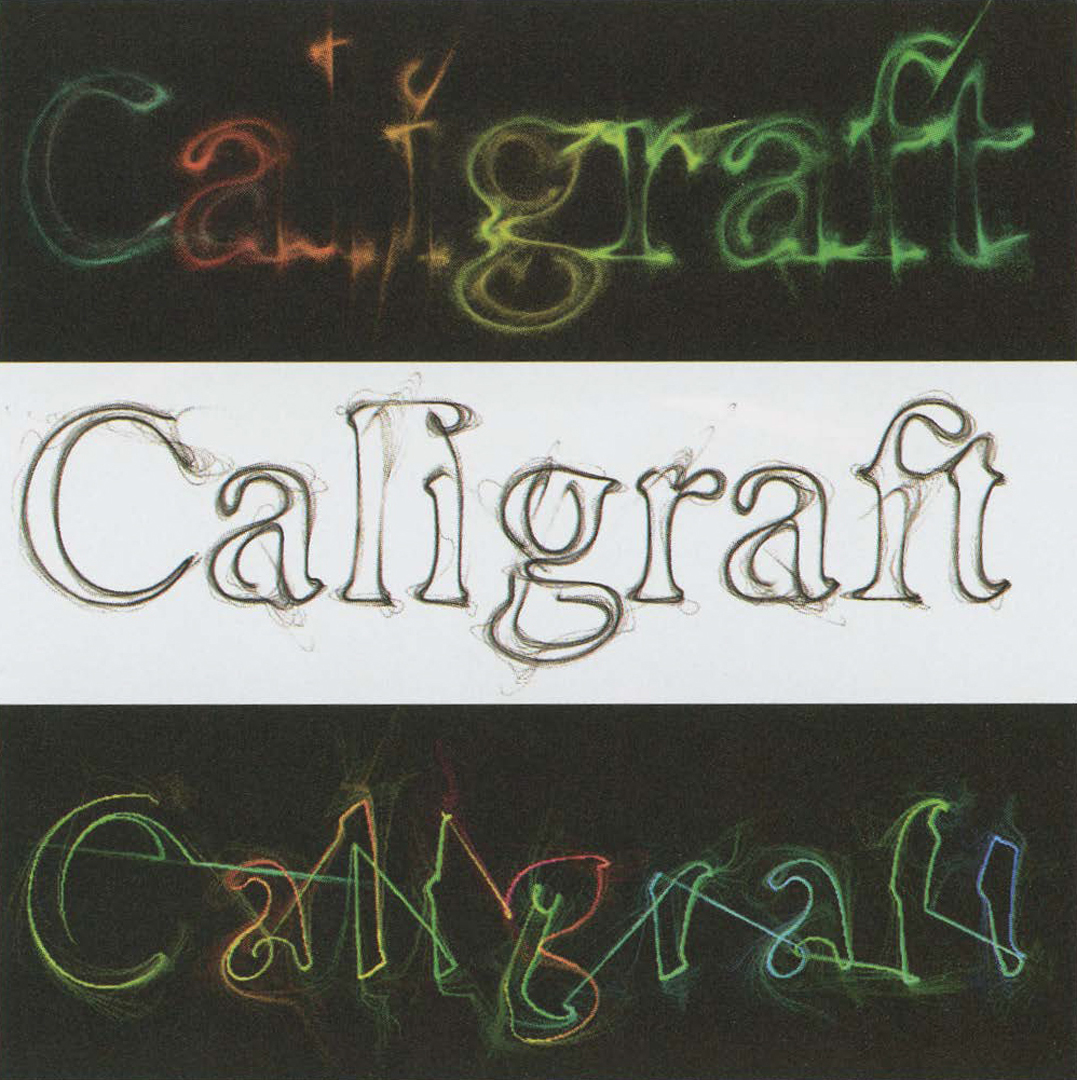Ricard Marxer Piñón: Caligraft
Artist(s):
Title:
- Caligraft
Exhibition:
Medium:
- Web-based art
Category:
Artist Statement:
The main idea behind this work is to explore a new dimension of textual representation. I try to consider the different possibilities of glyphs: words and text representations and distributions in space and time.
My interest is motivated by the large amount of abstract generative work created with the apparition of computing. I approach the figurative-generative field by using calculus and computation. This allows discovery of the limits of perception and recognition in a superficial but fun and interactive way.
The choice of text as the target of study is due to the quantity of resources available, and the history of study and work behind it. Fonts are more available than other vector art, since they are almost a requirement for most computer uses.
The work promotes exploration of textual representation spaces at different levels. It also intends to motivate creation of public-license fonts and create new design guidelines for optimal font crafting. On the other hand, it pretends to challenge the already-existing font rendering systems to discover what advantages computation can provide in the field of text rendering.
Technical Information:
A very important and general objective of the work is to reduce the gap between people and technology, and this was an important constraint for selection of the technology used in the work. Because of this, Processing was chosen as the main platform for creating new computational calligraphies. It was also important in the decision to create a new library, called Geomerative, that would facilitate the tasks of handling vector shapes. The font format used as the seed for the calligraphies is the True Type standard, because of its widespread use and availability.
From another perspective, the work approaches the concept of generative art, challenging the restriction of the domain to abstract art. This raised many technical questions, such as how to apply typical generative-art paradigms to recognizable figures, which required using very simple artificial intelligence algorithms and dynamic systems to achieve the “organic” impression of the results.





